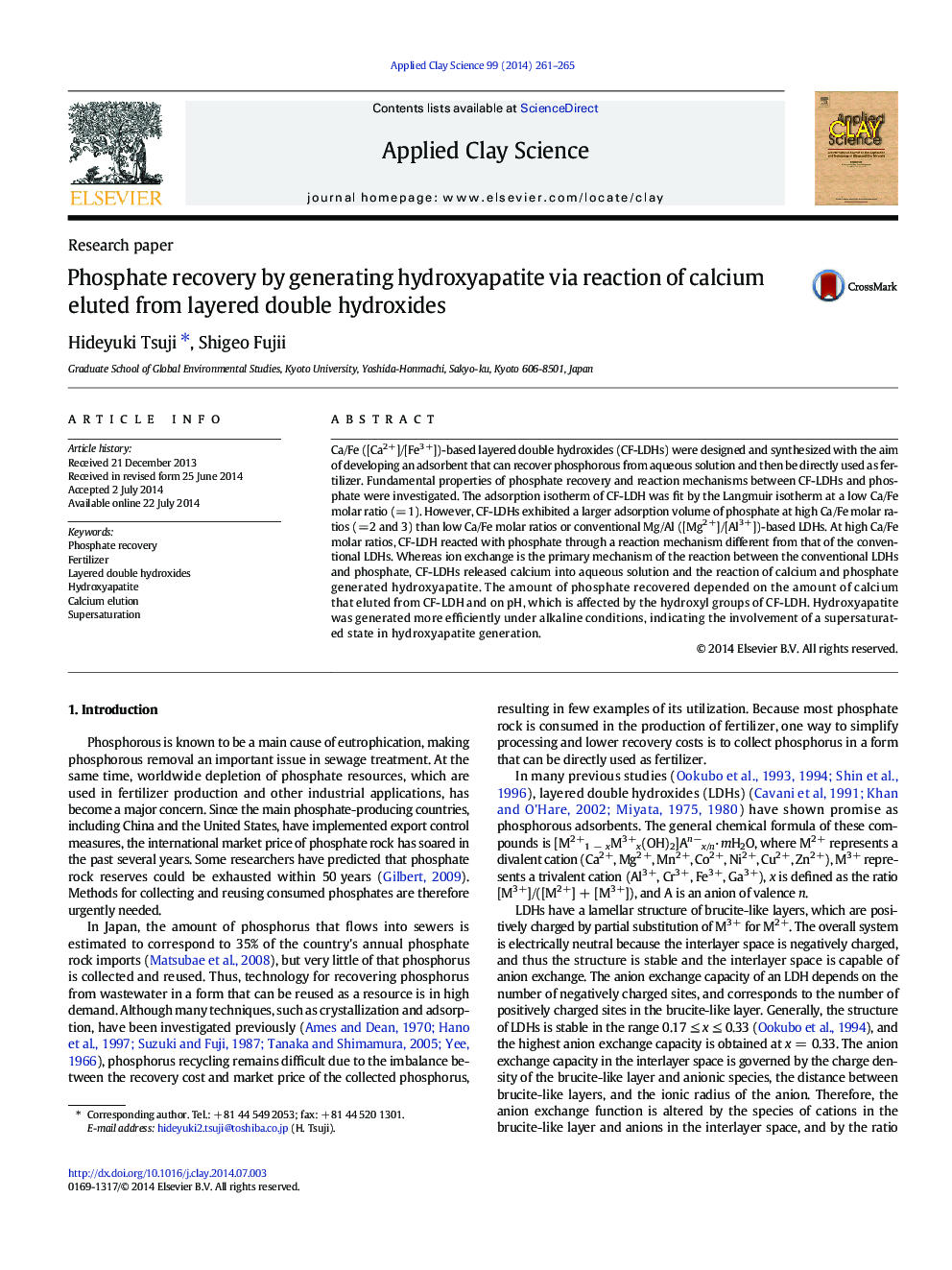| Article ID | Journal | Published Year | Pages | File Type |
|---|---|---|---|---|
| 1694758 | Applied Clay Science | 2014 | 5 Pages |
•We propose new adsorbent to be use as fertilizer after phosphate adsorption.•New Ca/Fe-based LDHs were synthesized.•LDHs exhibit large adsorption volume for phosphate at a high molar ratio of Ca/Fe.•Ca/Fe-based LDHs react with phosphate by a different mechanism from conventional one.•Calcium eluted from Ca/Fe-based LDH and phosphate generated hydroxyapatite.
Ca/Fe ([Ca2 +]/[Fe3 +])-based layered double hydroxides (CF-LDHs) were designed and synthesized with the aim of developing an adsorbent that can recover phosphorous from aqueous solution and then be directly used as fertilizer. Fundamental properties of phosphate recovery and reaction mechanisms between CF-LDHs and phosphate were investigated. The adsorption isotherm of CF-LDH was fit by the Langmuir isotherm at a low Ca/Fe molar ratio (= 1). However, CF-LDHs exhibited a larger adsorption volume of phosphate at high Ca/Fe molar ratios (= 2 and 3) than low Ca/Fe molar ratios or conventional Mg/Al ([Mg2 +]/[Al3 +])-based LDHs. At high Ca/Fe molar ratios, CF-LDH reacted with phosphate through a reaction mechanism different from that of the conventional LDHs. Whereas ion exchange is the primary mechanism of the reaction between the conventional LDHs and phosphate, CF-LDHs released calcium into aqueous solution and the reaction of calcium and phosphate generated hydroxyapatite. The amount of phosphate recovered depended on the amount of calcium that eluted from CF-LDH and on pH, which is affected by the hydroxyl groups of CF-LDH. Hydroxyapatite was generated more efficiently under alkaline conditions, indicating the involvement of a supersaturated state in hydroxyapatite generation.
